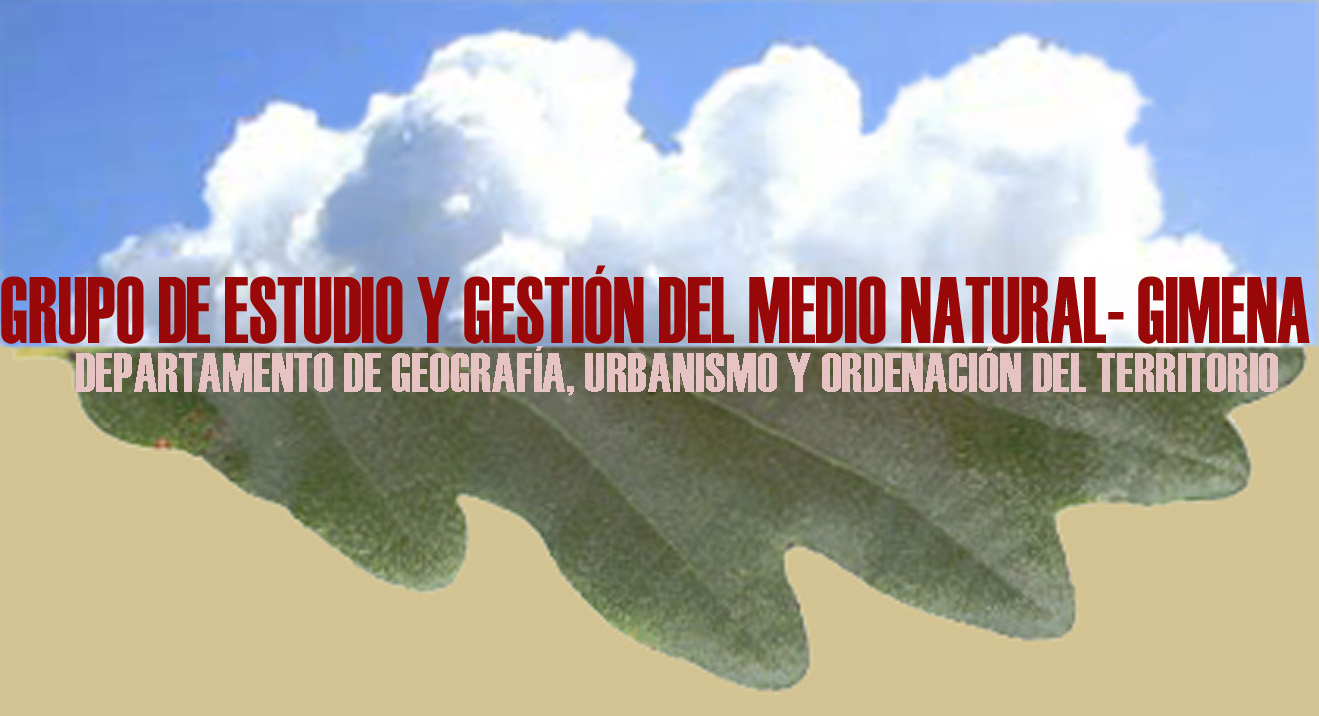
Grupo de Investigación
ESTUDIO Y GESTION DEL MEDIO NATURAL
Departamento de Geografía,
Urbanismo y Ordenación del Territorio- Universidad de Cantabria
PÁGINA PRINCIPAL
MIEMBROS
INVESTIGACIÓN
climatología
espacios forestales, incendios
riesgos naturales
cambio ambiental
ordenación, paisaje, patrimonio
NOTICIAS
DESCARGAS
CARRACEDO, V.;
DIEGO, C.; GARCIA CODRON, J.C.; RASILLA, D.F. (2009). Clima e incendios
forestales en Cantabria: evolución y tendencias recientes. Pirineos,
Revista de ecología de montaña, 164, p. 33-48.
RESUMEN
Los incendios son un
fenómeno frecuente en Cantabria, pero su estacionalidad no se
corresponde con el típico máximo estival característico del resto de
España. La mayoría se concentran a fines del invierno y comienzos de la
primavera y su origen son unas prácticas ganaderas (principalmente la
quema de matorral para mantenimiento de pastos) que aprovechan las
favorables condiciones atmosféricas originadas por un tipo de temporal
de viento conocido localmente como “surada”. En este artículo se
analizan las tendencias de algunas variables climáticas, desde 1961,
durante el periodo de máximo riesgo de incendios para determinar en qué
medida la aparición de incendios forestales ha estado condicionada por
la evolución climática reciente. Los resultados muestran que el clima
regional ha experimentado un calentamiento y un desecamiento, debido al
efecto combinado del incremento de la temperatura y de la reducción de
humedad relativa y precipitación, variables que juegan un papel
determinante en la aparición de este fenómeno. Sin embargo, la
frecuencia de “suradas” ha disminuido. Esta evolución climática regional
está estrechamente vinculada con la evolución de la circulación
atmosférica a escala sinóptica y hemisférica; la mayor frecuencia de
células anticiclónicas sobre la Península Ibérica a fines del invierno y
comienzo de la primavera, y la reducción del número de perturbaciones
atlánticas concuerdan en gran medida con la evolución de la Oscilación
del Atlántico Norte.
PALABRAS CLAVE:
Incendios forestales,
Cantabria, variabilidad climática, temporales de viento
ABSTRACT
Wildfires are a frequent event in Cantabria, but their seasonality does
not match the typical warm season maximum generalized in most of the
Iberian Peninsula. They occur at the end of the winter and the beginning
of the spring (January to March), being mostly anthropogenically
triggered, in conjunction with “Suradas”, a windstorm which combines
high winds and low humidity. In this contribution temporal trends of
several climatic variables from meteorological observatories located in
Cantabria and nearby regions are analyzed since 1961 during the highest
risk period in order to assess to what extent the occurrence of
wildfires may be linked to the recent climatic variability. Our results
show that the regional climate has become warmer and drier, due to the
combined effects of increases in temperatures and the decrease in
relative humidity and precipitation, variables that are likely to play
an important role in drought and fire proneness. However, the exception
is the frequency of “Suradas”, which have reduced. Those regional
climatic trends are strongly linked to the recent evolution of
atmospheric circulation at regional and hemispheric scale. The higher
frequency of anticyclonic cells over the Iberian Peninsula, and
conversely, the reduction of the number of Atlantic baroclinic
disturbances are consistent with the temporal evolution of the North
Atlantic Oscillation.
KEYWORDS:
Wildfires, Cantabria, climate variability, windstorms
Clima e incendios
forestales en Cantabria: evolución y tendencias recientes.
Available from:
http://pirineos.revistas.csic.es/index.php/pirineos/article/viewFile/28/29
